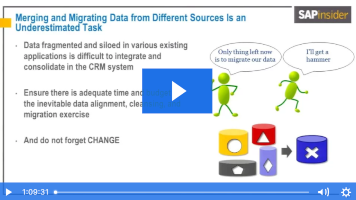Data tips for Vendor Managed Inventory (VMI) in SAP SCM
This tip comes from a session by Thomas Brassøe of Implement Consulting Group, planned for the SCM 2012 conference, March 19-22 in Orlando, Florida.
In his session “Improve Order Fill Rates and Minimize Inventory Levels and Costs Using Vendor Managed Inventory (VMI) in SAP SCM 7.0”, Brassøe notes that “9 out of 10 VMI projects are initiated by the customer – demanding automation from the vendor.” Thomas Brassøe’s session covers key business drivers – other than process automation – for VMI, with steps and tips to create & support a VMI process using DP and SNP.
VMI can be implemented in SAP Advanced Planning & Optimization (SAP APO) as part of the “normal planning flow” using demand planning (DP) and supply network planning (SNP) or as a stand-alone solution on top of normal SAP ERP planning flow. When it comes to data exchange and integration, he provides a number of tips, including these:
Do Not Let Missing EDI Get in Your Way
- Although EDI will greatly enhance the speed and reliability of the data exchange, there is no reason for letting missing EDI support postpone your VMI project
- Electronic data can still be exchanged (e.g., using email) and can be manually updated into SAP APO
- Forecast data is entered (e.g., by &ldq
uo;Copy and Paste”) directly in DP - Stock figures can be entered by IDoc emulation, by a small program or in a modified stock key figure
- Forecast data is entered (e.g., by &ldq
-
Manually exchanging forecast and stock figures by mail can greatly speed up your VMI prototyping efforts
Integrate VMI Location with Product Master Data
- With SCM 7.0 in SAP APO VMI, you are able to automatically create location products in the ship-to location (“customer location”)
- The customer material info record in SAP ERP carries customer, material, and customer material. This info record is used as reference to create the location products in SAP APO.
- A new Core Interface (CIF) integration model object for customer material has been created
- After activating the CIF model, the ship-to location product in SAP APO will be created, and the customer material number is populated







